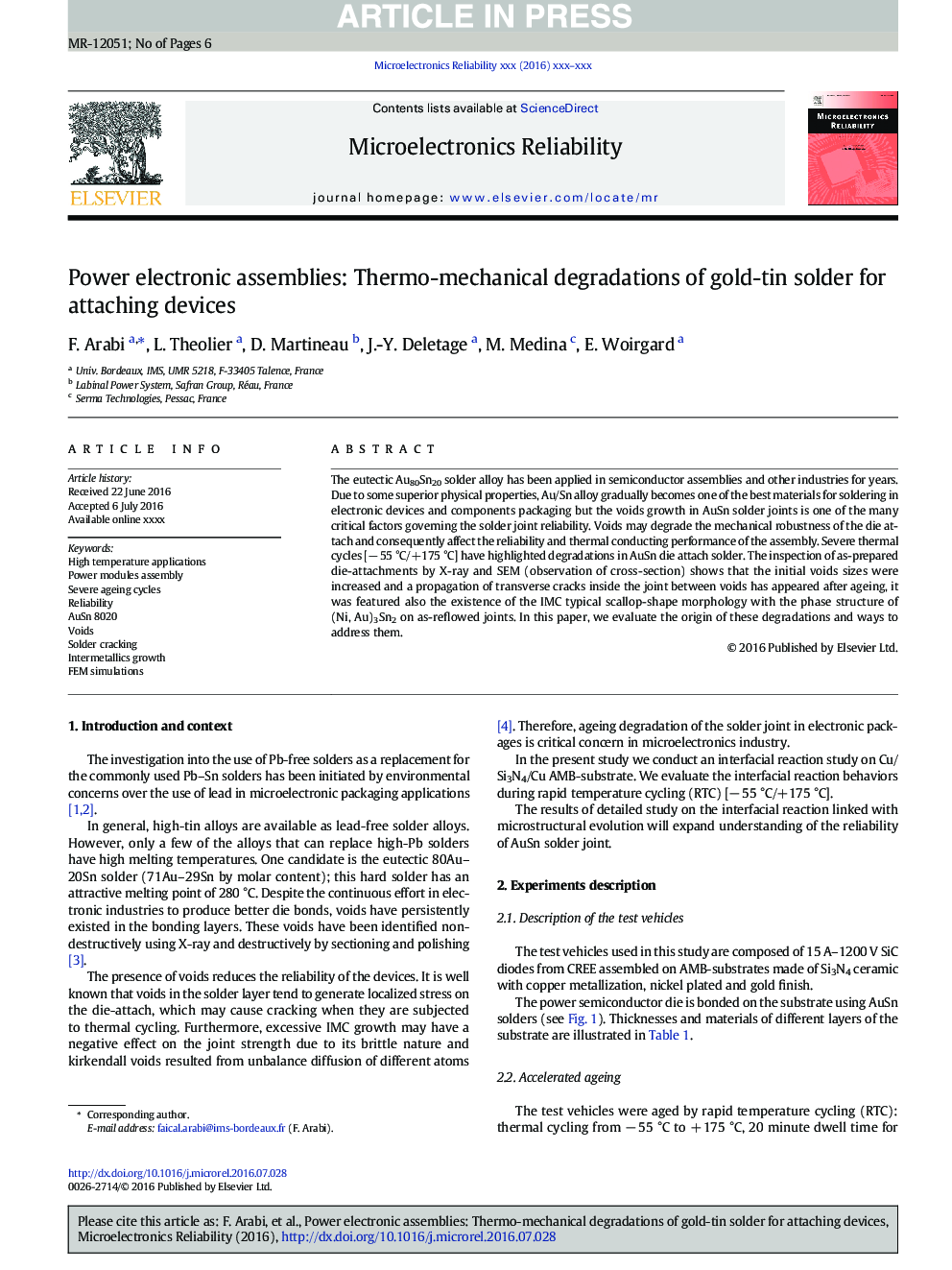| Article ID | Journal | Published Year | Pages | File Type |
|---|---|---|---|---|
| 4971874 | Microelectronics Reliability | 2016 | 6 Pages |
Abstract
The eutectic Au80Sn20 solder alloy has been applied in semiconductor assemblies and other industries for years. Due to some superior physical properties, Au/Sn alloy gradually becomes one of the best materials for soldering in electronic devices and components packaging but the voids growth in AuSn solder joints is one of the many critical factors governing the solder joint reliability. Voids may degrade the mechanical robustness of the die attach and consequently affect the reliability and thermal conducting performance of the assembly. Severe thermal cycles [â 55 °C/+175 °C] have highlighted degradations in AuSn die attach solder. The inspection of as-prepared die-attachments by X-ray and SEM (observation of cross-section) shows that the initial voids sizes were increased and a propagation of transverse cracks inside the joint between voids has appeared after ageing, it was featured also the existence of the IMC typical scallop-shape morphology with the phase structure of (Ni, Au)3Sn2 on as-reflowed joints. In this paper, we evaluate the origin of these degradations and ways to address them.
Related Topics
Physical Sciences and Engineering
Computer Science
Hardware and Architecture
Authors
F. Arabi, L. Theolier, D. Martineau, J.-Y. Deletage, M. Medina, E. Woirgard,
